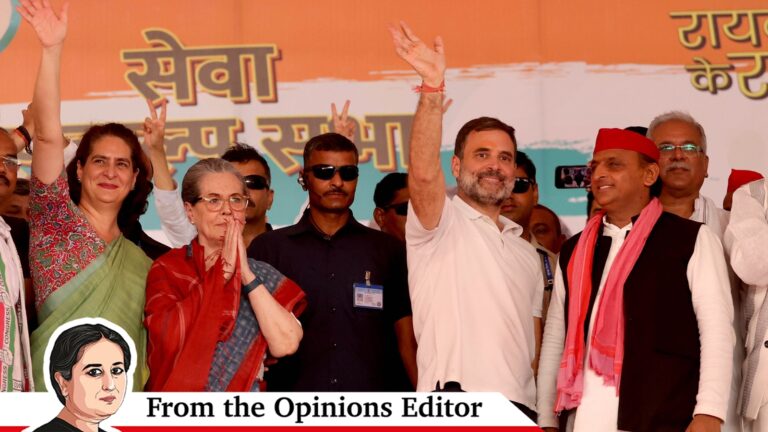The elections have entered the seventh and final phase, with voting completed in 486 constituencies and the remaining 57 seats going to polls on June 1. It has been a long journey but the scorching heat continues in most parts, scorching and testing both politicians and voters. Is an election supposed to be such a hot and arduous journey to a far away finish post? The question remains even after the results are out on June 4.
For now, before the elections are over, one more question remains: Has the opposition done everything it can to take on the ruling BJP?
There is only one voting stage left. Mallikarjun Kharge, President of the Indian National Congress The Prime Minister denied speculation about the Opposition’s Prime Ministerial candidate, saying it was like asking “Kaun Banega Crorepati?” If the Indian Union forms the government, all the leaders will decide who will be the Prime Minister, he said in Shimla. And when they voted in Delhi on Saturday, given the seat-sharing arrangement between the two parties, Rahul Gandhi would have voted for the AAP candidate and Arvind Kejriwal for the Congress candidate, underlining the shared interests of the two parties in their respective constituencies.
But Kharge’s sharp rebuttal and a photo-op that highlighted the chemistry between Kejriwal and Rahul may not be the final say in an election where incumbency has an advantage on all fronts, leaving many voters to ask: “But what else?”

It is not inconsequential that joint Indian rallies have hardly taken place, alliance partners are virtually fighting alone on their respective turfs and the coalition is most obviously splintering into component parts as soon as it enters Mamata Banerjee’s West Bengal territory. It may send a message to undecided voters that the Opposition alliance’s work is not done yet.

Bringing together leaders from different states and parties on one stage would certainly strain the opposition’s scarce resources, but it would also send a powerful signal to skeptical or distrustful voters of a shared commitment to unity and national stability.
Without it, even a rising opposition leader, like RJD’s Tejashwi Yadav, who has been given room to grow by Nitish’s withdrawal from the opposition and return to the BJP, risks being seen by voters as a regional rather than a national favourite. Unlike Mamata Banerjee, Tejashwi has not yet had to contend with anti-incumbency, and unlike Sharad Pawar, he has not been embarrassed by the recent party split. A vigorous campaign in which Tejashwi is the sole star is likely to burnish his credibility for the upcoming Lok Sabha elections, rather than to win Bihar in the ongoing Lok Sabha elections. Moreover, it is possible that winning Bihar is the priority for Tejashwi’s party, rather than strengthening its India base nationally.

To counter a BJP that appeals to voters on multiple fronts and uses its vast resources to corner rivals, the opposition needed to go all out. That it has not done so, and that in too many places it has given the impression that it is fighting to survive on its own turf rather than to win across the country, could prove costly.
Or maybe not, because if things go according to the Opposition’s plan, national and local discontent, combined with the insecurity stoked by the BJP’s unfulfilled promises and its blatant attacks, will see it play its part on its behalf.
It is true that rising prices and unemployment are worrying voters across the country and across states. Farmers’ discontent is palpable, young people are restless because job opportunities are hard to come by, and stories abound of local-level corruption scarring policy. In SC and ST areas, and beyond, the BJP’s “400” slogan has stoked fears that a third BJP government will amend the constitution, particularly affecting reservations.
It remains to be seen whether the opposition’s gamble that, even if it does not fully unite, it will anyway become a receptacle of discontent against the BJP will pay off.
But no matter who won or lost, two new things about this election were bound to unsettle both the winners and losers: The issue of a constitutional crisis was new to the electoral arena, and voters’ expressed distrust of voting machines was also new.
Both were seen and heard on one side of the political divide, of course, namely among those opposed to the BJP, but in a system in which even candidates who lose narrowly close races rarely question the final tally and in which both sides accept the basic rules of the game as a given, these are nasty blows in the electoral winds.
See you next week
Vandita

